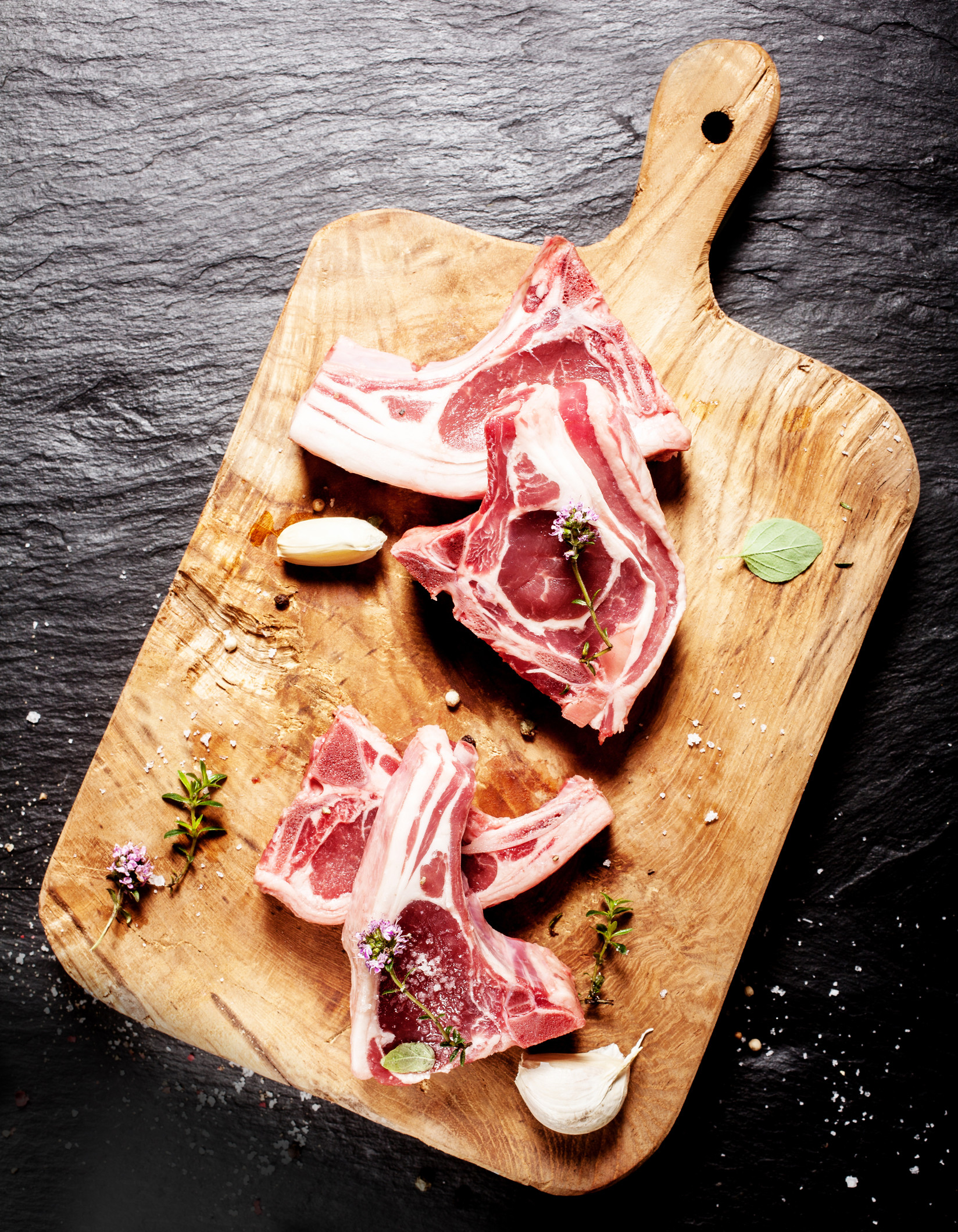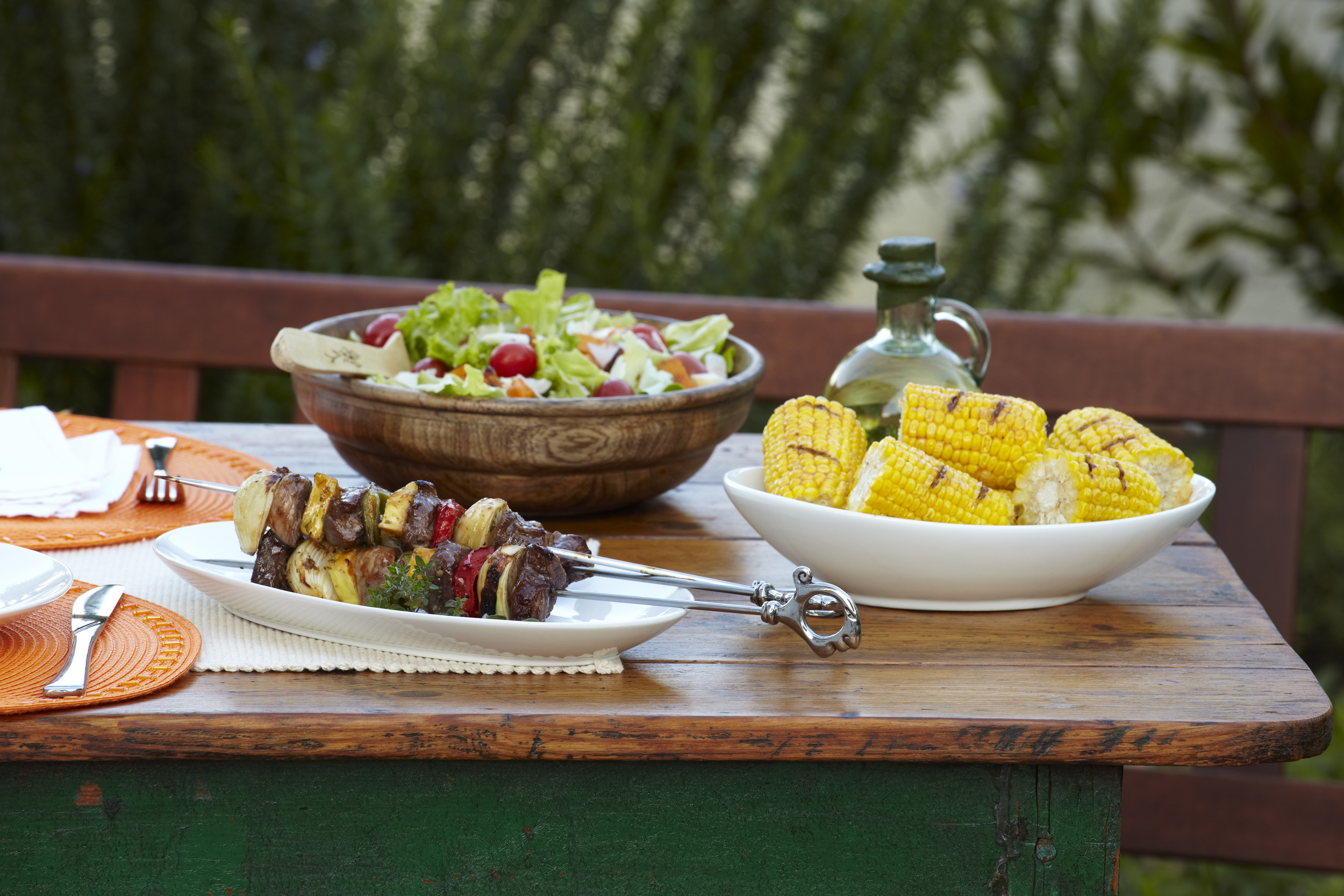News about your lamb chop – Agricultural producer, meet your meat consumer
by Tineil Hurter and Marina Bester for Lamb and Mutton South Africa
Newspaper headlines and news stories about the weak currency and increasing food prices, where red meat is often the culprit, could easily make any producer wonder “who is going to buy my product?” The fact that red meat has become a more expensive product (compared to other protein commodities), is a reality and therefore Lamb and Mutton SA mainly channels its consumer education to the higher LSM (Living Standards Measure) consumer group in South Africa.
They are after all the consumers that can afford the product, but are often confused by incorrect and misinterpreted health messages that are not positive towards mutton and lamb.
These misconceptions together with a culture of fast foods and take aways without any mutton or lamb, creates a dark picture of consumers. Opportunities can easily slip through our fingers if we do nothing about the situation.
It is the mission of Lamb and Mutton SA to keep mutton or lamb on the consumer’s plate – despite all these counteractive forces. It is therefor our main goal for 2016 to keep the consumer informed, through radio and social media, as to how to use mutton (even the cheaper cuts) in a modern, convenient and economic way. This year we will use the expertise from butchers and restaurants to celebrity “braaiers” and top chefs in order to make lamb and mutton South Africa’s number one protein choice.
Who exactly is the South African consumer we want to reach? Tineil Hurter, a post graduate agricultural economy researcher of the University of Pretoria, currently focuses on research on the purchasing of lamb and mutton in South Africa and is therefor the correct person to introduce to the consumer of your product – proudly South African lamb and mutton.
How is the South African consumer defined?
With regards to purchasing power, our South African population is one of the most diversed populations in the world and often a headache for ecomomists to figure out. It is important to understand that although we often refer to the “higher income consumer”, consumers mostly spend more than their disposable income.
Right from cultures that have westernized to perceptions about meat that have caused myths, there still are many unmeasurable (and somewhat unpredictable) factors that have an influence on the consumer. There are some aspects that can be measured and whereby consumers are classified in order to simplify things. The Living Standards Measure (LSM) instrument is developed to group diverse consumers with different behavior in order for consumers with the same behavioral patterns to be able to be grouped together. The development of the instrument is stimulated by a range of events. The grouping of the population according to rural/urban areas has lost its value as a differentiation method as the gap between rural and urban markets shrank. At the same time consumer behaviour became more and more the same in both markets. The South African population is grouped according to living standards and is known as LSM groups. These groups are under no circumstances a measurement of racial groups but rather reflects the real population distribution.
Every group has its own perception of what quality is en therefor is it important to know exactly who is a product’s target consumer and what their needs are in order to produce a product that fulfills their requirements.
LSM groups can be simplified as follows
LSM 1 – 4: The low income consumer: In 2013 approximately 22% of the population was in the LSM 1 - 4 group with an average monthly income of R2 372. The low income group spends up to 50% of their income on food and is therefor very price sensitive when it comes to the purchasing of food products. Most of these consumers stay in rural areas in traditional huts or shacks, while only 15.9% stays in the so-called “matchbox” houses. This group has little to no access to basic services. Individuals have little exposure to high school education but no matric. They look and listen mostly to African language radio stations and television programmes. The group’s age varies between 15-24 and 50+.
LSM 5 – 7: Approximately 53.5% of the South African population is the middle class consumer with an average monthly income of R7 683. This consumer group has access to a variety of media channels. They stay in urban areas and have access to all basic services. A group of 25-49 year olds is represented in LSM 6 and the lower segment of LSM 7, while the higher segment of LSM 7 consists of 25-34 year olds. LSM 7 has at least 1 out of 7 days access to internet. All consumers in this group have at least matric although a large percentage of this group is still without a job.
LSM 8 – 10 is the higher income consumer with an average monthly incomce of R25 725. These consumers live in urban areas. Most of them have matric or a higher qualification. These consumers have access to internet and all forms of local and international media including television, radio, glossy magazines, electronic media resources and newspapers. This group is very vulnerable to international consumer trends.
Current consumer consumer trends
Income levels are surely one of the biggest underlying forces of consumer patterns, especially products that are sold at a premium price. Just because a consumer can afford a product does not mean that he/she will want to have the product. Consumers must be empowered with information which will again create the need to buy the product. Except for basic human needs, the “ambition” to buy a product can become a certain trend. Some trends have a short life span and are created by a popular culture and the media, while other trends are more sustainable and become part of a persons lifestyle.
An international research company, Mintel Food and Drink, who supplies large roleplayers in the food industry with data about food trends and consumer needs, issued a report with 2016’s top food trends. The good news is that quite a few of these trends fit Lamb and Mutton SA like a glove!
Mintel Food and Drink predicts 2016’s food consumer trends as follows:
· Artificial: Public Enemy No. 1
• Eco is the new reality
• From the inside out
• Alternatives everywhere
• For Every Body
• Based on a true story
• E-revolution: From Carts to Clicks
• Good enough to tweet
• Table for one
• Diet by DNA
• Fat sheds stigma
• Eat with your eyes
The current consumer trends, “artificial-public enemy no. 1” and “diet by DNA” show that consumers are aware of the importance of eating fresh food, as close to its natural form. Consumers are moving more and more back to the basics when it comes to food and want to consume the correct type of food that is made for the human body. Consumers insist on less processed foods with long lists of ingredients and preservatives. The consumer in general sees fresh meat as a primary protein source that has various health benefits. Because of this, the consumer trend, “fat sheds stigma”, is ideal for the consumption of mutton and lamb. For a few years the consumer had a distorted picture of mutton and lamb. Everyone was concerned about their health and cholesterol levels. This led to many consumers “banning” mutton and lamb from their diets. Trolleys in chain stores were stacked with loads of lettuce and greens, chicken breasts, and not to even mention the gluten free bread and butter free baked products.
Thanks goodness for the excellent South African research on red meat and Prof Tim Nokes that convinced South Africans that not all fat is bad. (Instead of actually admitting that mutton has made it back onto barbeques, we have only given it the fancy name of Banting!)
However, the consumer is not only more concerned about his/her health, but also about the environment and the treatment of animals. They want easy, tasteful and “guilt-free” food regarding sustainability of our environment. The fact that most of South African sheep herds are free grazing, is a positive contributing fact for the industry of which the consumer can be made more aware of.
Another consumer trend that contributes to the consumption of South African mutton and lamb, is the element of “based on a true story”. Consumers want to learn more about the origin of the product, speak to the producer and share in the story. Products with names that can be associated with their origin, such as Karoolam, will according to this trend, become more popular on menus and on shop shelves. This is because a product such as Karoolam is traceable and is also unique in taste and production.
How do you reach these consumers?
As already mentioned, Lamb and Mutton SA targets the LSM 8-10 group. How do one actually decide which channels to use to communicate with consumers? In the end it is the media who plays a huge rol in communication and determines what trends consumers will follow (off course according to the contents of their wallets as well!).
From 2001 to 2004 a new consumer group joined the middle class and is known as the “Black Diamonds”. The Black Diamonds moved themselves from the lower LSM group to the middle class group. They strive together with other upcoming middle class groups to eventually follow the same lifestyle as the consumers that fall into the higher income groups. This ambition causes this group to be reached through channels we initially thought only reach the higher income consumers. These consumers tend to spend more of their income on luxury food such as lamb and mutton.
The South African food trade market are dominated by names such as Pick n Pay, Shoprite, Checkers, Spar and Woolworths and this is also where most consumers make their purchases.
Because our lives are more hurried than a decade ago, consumers have the need to get more pleasure from simple ways of preparing food, multi-cultural food experiences and quality meat. This one-stop convenience the consumer is looking for, is realised through technology. The higher LSM groups and even the upcoming middle class group tend to make their purchases online. Applications (apps) and websites that work on smartphones make it possible for consumers to get new recipes for the ingredients they have in stock just by the click of a button. Platforms on social media such as Facebook give housewives the opportunity to share recipes and ideas with others. These apps help the consumer to make their purchases online – anything from apples and salt to leg of lamb and rosemary can be delivered to your doorstep within a few hours.
Producers and dealers should make use of these platforms to market their products. The more specific, the better. The more unique the product, the easier the consumer will remember it, buy it and tell others about it.
Social media plays a huge role in the lives of the upcoming middle class consumer. They read news electronically and tell others often with what they are busy with. The trend to take photos of food and what the consumer is enjoying and then posting it on social media has become very popular. Friends and family want to see what we are preparing for Christmas or grandmother’s 80th birthday! Stories about food are shared and therefor it is crucial to make use of the powerful results of social media by getting your product’s name visible to others through the “hashtag” (#).
What does the consumer want when it comes to mutton and lamb?
Without a formal study and opinion polls on mutton and lamb specifically, we have put ourselves in the shoes of the general meat consumer and analysed our thoughts of what such a person would see as important when making a choice regarding leg of lamb or a lamb chop. The following characteristics emerged:
· The meat should look and smell fresh.
· The meat should have a nice colour.
· The R/kg must be within my budget and my ability to purchase.
· The packaging must be smart and hygienic.
· The meat should not have excessive fat.
Although many of the aspects are not within the consumer's control, there are surely a few important characteristics and qualities that should be kept in mind. The analysing of the value chain is however a study on its own and justifies a whole new article for a next publication. You will agree that a lot of producers have pointed out that it is essential that a full national study of what the consumer exactly wants when it comes to lamb and mutton, is necessary. If you as the producer or consumer is willing to contribute to the current research study on lamb and mutton consumption, please contact Tineil Hurter at tineil.hurter@outlook.com.
If researchers and consumers can work together to get to know the South African consumer better, we can assure that lamb and mutton stays on the plate of every meat consumer in the country.
So you didn’t grow up on a farm, the coffee table in your parents’ house never sported a “Lanbouweekblad” or “Stock Farm” magazine, and the closest you've ever been to farming is the succulents in your window sill. However you are a South African who loves a nice lamb chop on the braai or a piece of lamb roast for a Sunday lunch. These things cannot be produced in a warehouse. No we need good, dedicated farmers who understand business as well as the elements of nature to produce good quality, nutritious lamb and mutton meat. Tineil Hurter, agricultural economist from the University of Pretoria is here to write about, but also for, the red meat producers of South Africa.
Marina is the Project Manager of Lamb and Mutton SA’s consumer education project. Marina did her degree in Consumer Science at the University of Pretoria. She is currently a MSc student in Nutrition under the mentorship of Prof Hettie Schönfeld at the University of Pretoria.
Contact Marina for any questions or information about Lamb and Mutton SA’s consumer education project at marina@healthymeat.co.za.








